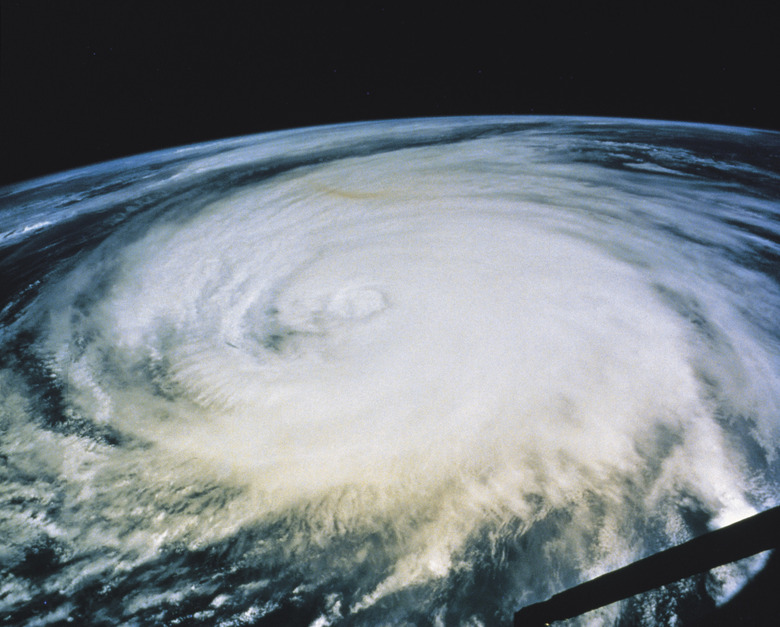How Are Cyclones Made?
A cyclone is a storm that involves the movement of warm, high-pressure air and cooler, low-pressure air. This movement of air causes a rotation that picks up speed and creates a funnel.
Where they Begin
Where they Begin
Cyclones only form over masses of warm water, like ocean water near the equator. Warm, moist air rising is what begins the cyclonic process.
How They Build
How They Build
Cooler air rushes in to fill the void left by the rising warmer air. This air warms and becomes moist as well, allowing it to rise. More cool air rushes in to fill the void.
Eye Formation
Eye Formation
The warm, moist air cools as it rises higher into the air and forms clouds. As the process continues it begins to pick up speed and an eye forms in the center. The eye is the lowest pressure spot in the storm.
Classification
Classification
This process is officially called a cyclone when wind speeds reach 74 mph.
Dissipation
Dissipation
When cyclones hit land the process begins to slow because they no longer have a stream of warm air to "feed" them. However, they take an extraordinary amount of time to dissipate completely.
References
Cite This Article
MLA
Parker, Sandra. "How Are Cyclones Made?" sciencing.com, https://www.sciencing.com/facts-5801992-cyclones-made-/. 7 August 2017.
APA
Parker, Sandra. (2017, August 7). How Are Cyclones Made?. sciencing.com. Retrieved from https://www.sciencing.com/facts-5801992-cyclones-made-/
Chicago
Parker, Sandra. How Are Cyclones Made? last modified March 24, 2022. https://www.sciencing.com/facts-5801992-cyclones-made-/
